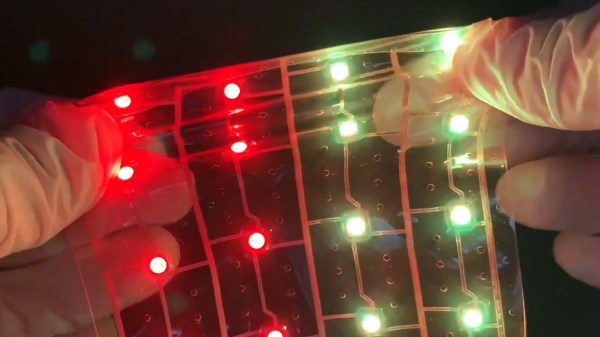Flexible PCBs have become increasingly common in both commercial devices and DIY projects, but Panasonic’s new stretchable, clear substrate for electrical circuits called Beyolex takes things a step further. The material is superior to existing stretchable films like silicone, TPU, or PDMS due to its high heat tolerance (over 160° C) for the purposes of sintering printable circuit traces.
But, a flexible substrate isn’t very useful for electronics without some conductive traces. Copper and silver inks make for good electrical circuits on stretchable films, and are even solderable, but increase resistance each time they are stretched. Recently, a team out of the University of Coimbra in Portugal has developed a liquid metal ink that can stretch without the resistance issues of existing inks, making it a promising pair with Panasonic’s substrate. There’s also certain environmental benefits of printing circuits in this manner over traditional etching and even milling, as you’re only putting conductive materials where needed.

After the break, check out Panasonic’s earlier videos showing some of their demo circuits that include a stretchable NFC antenna harvesting electricity even while submerged in water and an LED matrix performing while being, bent, rolled, and stretched. We’re excited to see where this technology leads and when we hackers will be able to create our own stretchable projects.
A great many flexible PCB projects have graced Hackaday, from early experiments to sophisticated flexible PCB projects. Heck, we had a whole Flexible PCB Contest with some awesome flexible projects.
Continue reading “Truly Flexible Circuits Are A Bit Of A Stretch”












